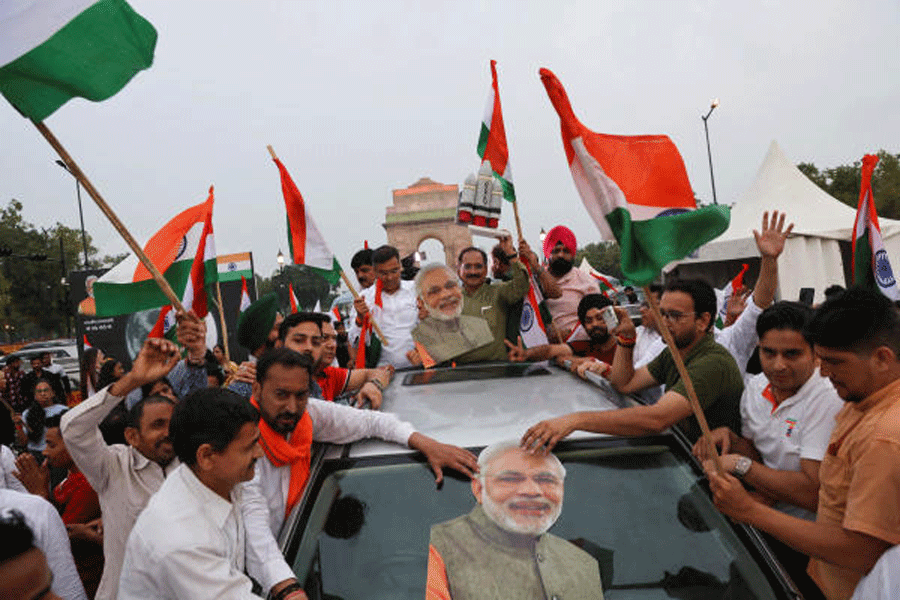The government has defended textbook developer NCERT against charges of mixing up mythology and science in its account of Chandrayaan-3, and of unwarranted attribution of the mission’s success to Prime Minister Narendra Modi, in reading material for schoolchildren published last week.
With some academics and students’ groups criticising the NCERT’s references to Hindu gods and flying chariots in the context of Chandrayaan-3, the education ministry issued a media statement on Wednesday saying mythology provides ideas that lead to innovation and new knowledge.
“Mythology and philosophy put forward ideas and ideas lead to innovation and research,” says the statement, issued through the government’s publicity arm, the Press Information Bureau.
“Numerous research studies emphasise that mythology plays an indispensable role in the cultural fabric of any country, including Bharat. Furthermore, the integration of culture into education not only fosters a profound understanding of a nation’s historical legacy but also bolsters creativity and problem-solving skills among students.”
The NCERT recently published 10 “modules” — supplementary reading material for schoolchildren of various grades — on the success of Chandrayaan-3.
The module for middle school (Classes VI to VIII) pupils presents the success of the Indian Space Research Organisation’s (Isro) moon mission as a legacy of India’s traditional knowledge.
“Did scientific achievement happen only now?... Literature tells us that it can be traced back through Vymaanika Shastra: ‘Science of Aeronautics’, which reveals that our country had the knowledge of flying vehicles in those days,” the NCERT text says.
“The Vedas, the oldest of Indian texts, makes a mention of various gods being transported on wheeled chariots pulled by animals, usually horses, but these chariots could also fly.”
The module refers to the “Pushpak Vimaan”, a flying chariot mentioned in the Ramayana.
Several modules, such as the one for pupils of nursery classes and Classes I and II, says Prime Minister Modi boosted the courage of Isro scientists after the failure of Chandrayaan-2 and asked them to try once more.
A space analyst — an amateur space enthusiast who has been tracking Isro’s activities for years — said the text gave the impression that Chandrayaan-3 was possible because of the Prime Minister’s encouragement.
However, he added, it has been an ingrained principle with Isro that it must try again after every failure, and the space agency’s history shows it has done so successfully multiple times in the past.
Replying to such criticism, the education ministry statement said: “Additionally, it is essential to emphasise the commitment of the Hon’ble Prime Minister towards space achievements. Recognising the Prime Minister’s unwavering support and encouragement to our scientists can inspire students and motivate them to take an interest in science and technology.”
Four of the 10 NCERT modules are for Classes IX and X, and three for Classes XI and XII. There’s one for Classes II to V.
The modules come at a time various government ministries have launched a drive to set up selfie points with images of Modi and text about his government’s achievements in the run-up to a slew of state polls and a general election.










